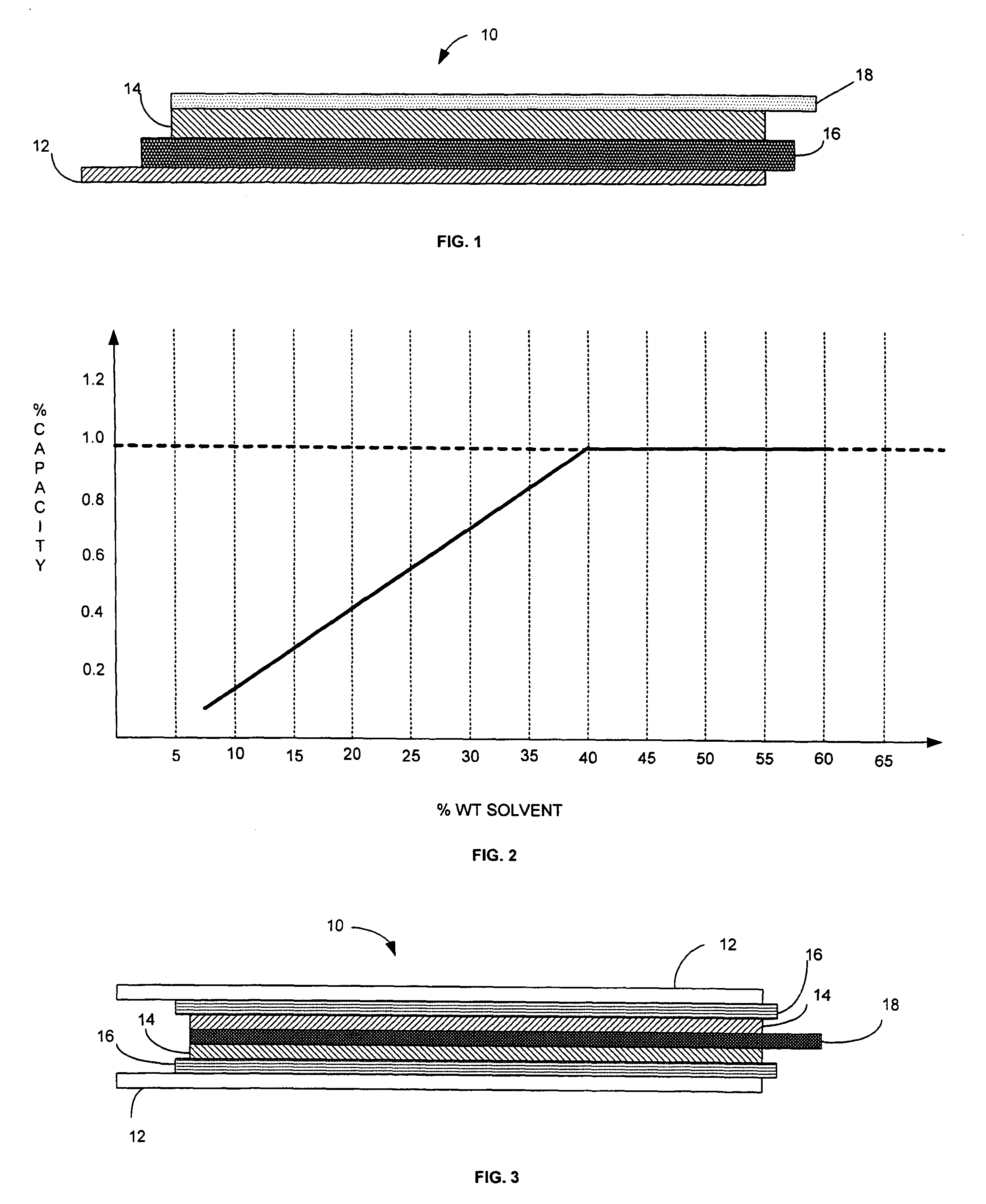Polyimide-based lithium metal battery
a lithium metal battery and polyimide technology, applied in the field of lithium metal batteries, can solve the problems of reducing the ionic mobility of lithium metal electrodes, affecting the ionic conductivity of generators, and affecting the ionic conductivity of generators, and achieve good ionic conductivity
- Summary
- Abstract
- Description
- Claims
- Application Information
AI Technical Summary
Benefits of technology
Problems solved by technology
Method used
Image
Examples
Embodiment Construction
[0034]FIG. 1 is a schematic cross-sectional view of a battery 10 according to one embodiment of the present invention. In particular, the battery 10 comprises at least one lithium metal anode 12, at least one composite cathode 14, at least one electrolyte separator 16 disposed between each lithium metal anode 12 and each composite cathode 14. The lithium metal anode 12 consists of a thin sheet of metallic lithium or alloy thereof. The composite cathode consists of a mixture of an active material such as a transitional metal oxide; an electronic conductive filler such as carbon black; and an ionically conductive electrolyte polymer binder comprising a lithium salt. The electrolyte polymer binder may be an electrolyte polyimide binder comprising an alkali metal salt or a polyether binder also comprising an alkali metal salt. The composite cathode 14 is supported by a metal current collector 18 typically made of thin aluminium foil. The electrolyte separator 16 comprises a soluble poly...
PUM
| Property | Measurement | Unit |
|---|---|---|
| Percent by mass | aaaaa | aaaaa |
| Percent by mass | aaaaa | aaaaa |
| Percent by mass | aaaaa | aaaaa |
Abstract
Description
Claims
Application Information
 Login to View More
Login to View More - R&D
- Intellectual Property
- Life Sciences
- Materials
- Tech Scout
- Unparalleled Data Quality
- Higher Quality Content
- 60% Fewer Hallucinations
Browse by: Latest US Patents, China's latest patents, Technical Efficacy Thesaurus, Application Domain, Technology Topic, Popular Technical Reports.
© 2025 PatSnap. All rights reserved.Legal|Privacy policy|Modern Slavery Act Transparency Statement|Sitemap|About US| Contact US: help@patsnap.com


